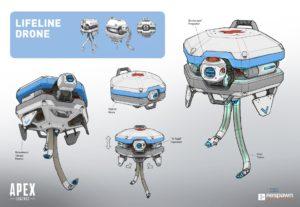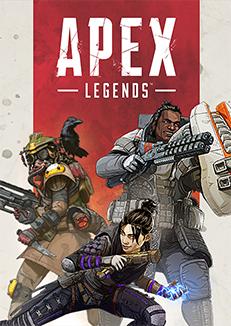Introduction:
Apex Legends is a free-to-play, battle-royale/hero shooter game developed by Respawn Entertainment and published by Electronic Arts. It is available on Windows, PS4, PS5, Android, IOS, Nintendo Switch, Xbox One, and Xbox Series X and Series S.
Target Audience:
Apex is a great game for battle-royale fans who enjoy precision first-person shooter gameplay and fast-paced movement mechanics. It is rated T for Teen by the ESRB and is meant to be played in groups of 3.
Formal Elements:
Two of the most defining elements of Apex Legends are Outcome and Objective. As a battle-royale, it is a zero-sum game, one team’s victory means a loss for every other team. Here, a team wins by eliminating every other team in the match by wiping out every player on their team. This makes for extremely high-stakes games where any team member’s death is extremely punishing. Players thus have to carefully balance how aggressively they engage other teams to ensure they can eliminate them and survive to face the next. Overall, this makes for highly intense Player-versus-Player Conflict.
Another important element of the game is Players. Apex lobbies host an incredible 60 players. Something that made Apex stand out from other battle-royales when it released that it was designed to specifically be played in teams of 3. At the time, it didn’t even offer the option to play matches with single-player teams or other team sizes. The game’s map as well as its characters and their abilities have been balanced around teams of 3 and an individual character’s viability (especially supports) gets thrown off by other team sizes. For example, one of medic character Lifeline’s abilities has her drone revive a downed teammate for her; an ability that has no use without teammates.

A final incredibly important element of Apex Legends is Resources. Like many battle-royale games, Apex has randomly generated loot scattered across the map. This loot includes weapons, armor, and gear such as healing items and portable revive stations. Arguably, the more interesting resources come in the form of the unique abilities every playable character possesses. These abilities can be anything from a grappling hook to a suppressive air-strike and are an essential part of how players construct a team and play in a given match. For example, a team with Pathfinder can use his ziplines to reposition more quickly to loot, fights, or safe ground while a team with Revenant’s Death Totem, which brings teammates back from death, can play extremely aggressively knowing they won’t die.

Type of Fun:
Challenge is the best way label the fun in Apex Legends. The game is incredibly competitive, putting you up against 19 other teams of players all looking to eliminate each other and be the last team standing to claim victory. The game has a steep learning curve. To improve your odds of victory, you’ll have to master the game’s difficult and aim-intensive gunplay, learn how to use movement mechanics, and familiarize yourself with every ability in the game and how to play around them.
Moment of Success/Failure:
While trying to be fancy with Pathfinder’s grappling hook ability, I accidentally ended up sling-shotting myself off of the map and eliminating myself, leaving my teammates to fend for themselves and ultimately die when a full squad showed up immediately after my death.
Thing to Change:
While I enjoy Apex, I’m not the biggest fan of randomness in “competitive” games, something which almost every battle-royale has a lot of, especially in its loot generation. I find it incredibly frustrating and unbalanced to be sent back to the main menu time and time again immediately after spawning into a game because your team landed in a spot where no weapons happened to spawn while the team next to you found the lion’s share of rifles and grenades. This imbalance, however, seems to be purposefully built into many battle-royales as a way to increase player retention, which is why I often gravitate towards Apex‘s “Arena” mode, which replaces the random loot with an economy system akin to those of CS:GO or Valorant.
Balance:
As described above, there is a level of asymmetrical balance in Apex as a multiplayer game. But rather than being “balanced” around fairness and competitive integrity, it’s balanced around player retention (keeping you addicted/coming back), similarly to Slot machines. Because as many times as you start a match and happen to die instantly due to an unfairly disadvantaged starting position (bad loot luck), there’s always the chance that the next match will give you a great spawn. Beyond that, I would say that the game requires a “fruity” approach to balancing as many of the game objects, abilities in particular, are very unique from each other and hard to compare. Because of this, playtesting and player feedback is necessary to prevent a “broken” game state.




